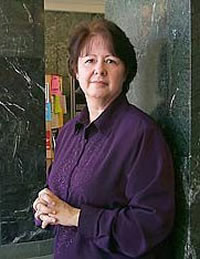Violin super-star Joshua Bell wowed a packed house at the Stevens Center in downtown Winston-Salem Tuesday night. The “poet of the violin” joined the Winston-Salem Symphony for a magnificent performance of Brahms’ Violin Concerto in D, Op. 77 under the animated direction of WSS Music Director Robert Moody. The three-movement concerto, written in 1878, is a milestone in the violin repertoire, and with Bell as soloist, the performance elucidated all of the power, majesty, and lyricism inherent in the score. After a long orchestral introduction, which presents all of these moods, the violin finally makes its entrance with a grand flourish.
Bell, who plays the 1713 Huberman Stradivarius violin,* does not impress one with a particularly large tone. But the intonation and sheer artistry overpower the listener. His dramatic persona (accompanied by a lot of engaging body movement) was absolutely convincing, and his intonation was exquisite. He performed his own cadenzas for the concerto; they wonderfully blended in tunes from the movement amidst a torrent of scales, arpeggios, and more double- and triple-stops than you could shake a stick at.
The slow middle movement was an essay in luxuriant lyricism. Bell soared above the orchestra, hesitating at the end of lines with piquant poignancy, creating music at the most expressive level. The final movement, a rondo with a gypsy-infused theme, was a delight to hear. Although the delay at the tune’s last downbeat seemed a bit over-the-top, everyone was having fun throughout. Moody and Bell worked closely together to make sure soloist and orchestra were exactly in synch. Bell gave the enthusiastic crowd something to remember for a long time.
Two other magnificent works preceded the Brahms: the Prelude to Wagner’s opera Die Meistersinger and Stravinsky’s Firebird Suite (written for the Ballets Russes, performing in Paris in 1910, revised 1919).
Wagner’s Prelude was actually performed in 1862, five years before he completed the opera. Several themes from the work play an important part including the opening melody and march-like theme. The symphony’s performance was sturdy, with solid brass playing, scurrying string passages (often not in synch), and colorful winds (also not always together). The not quite ten-minute work served as a powerful warm-up for the inspired evening of music making.
The Firebird is a tour-de-force of orchestration, showing off the amazing colors and virtuosic playing of an ensemble. For the most part, the WSS rose to the challenge, relishing in the rich palette of instrumental color called for by the score. The six-movement suite, played without pause, opens with eerie low string ostinato; the rest of the orchestra gradually joins in. Brass and wind syncopated punctuation marks enlivened the texture and eventually the flute (the Firebird, joyously played by Kathyrn Levy) and other winds speak up. Wonderful opening!
Other great moments included the chamber-like playing between the principals – flute, clarinet, oboe, cello, bassoon – in a moment of intimacy before more raucousness. The finale begins with an incredibly exposed horn solo that leads into one of the most brilliant climaxes in the literature. Maestro Moody’s conducting was, as usual, full of dramatic gestures, urging and pleading the orchestra to give its all. In the finale, the chords were a bit more detached than one might like – the result lessened the concluding brilliance and did little to add to the overall volume of the proceedings. A picky detail that certainly did not detract from the overall excitement of the brilliant score.
*Click here to hear a bit of Schubert, played by Huberman in 1936 – presumably on this violin.











